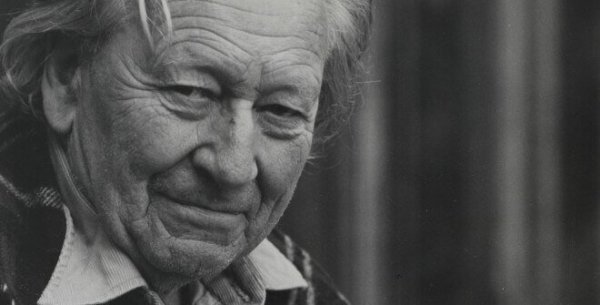Gregory Bateson's Double Bind Theory

The double bind theory was developed by anthropologist Gregory Bateson and his research team in Palo Alto, California (1956). It’s framed through a systemic perspective and it talks about all the situations where you communicate with someone and receive conflicting messages.
They came up with this theory to try to explain the psychological roots of schizophrenia, leaving aside theories related to brain dysfunction and the body itself. The sad truth is that schizophrenia is still one of the most puzzling mental illnesses out there. In fact, there are plenty of theories about how it originates. Some of them are biological, and others say it has social roots. Now we’re going to delve deeper and give you a better idea of what the double bind theory is.
A short biography of Gregory Bateson
Gregory Bateson was born in Grantchester, England on May 9th, 1904. He was an anthropologist, social scientist, linguist, and cyberneticist who had an impact on a lot of other intellectual fields. Some of his most notable ideas show up in his books Steps to an Ecology of Mind (1972), Mind and Nature: A Necessary Unity (1979), and Angels Fear: Towards an Epistemology of the Sacred (1987).
Bateson and his collaborators, people like Jay Haley, Donald Jackson, and John Weakland, were pioneers in developing the systemic perspective. Certain academic circles see him as a cult figure, fascinating due to his dark, eccentric personality and the many things he accomplished. But the growing interest in holism, systems, and cybernetics has also lead to a natural push for educators and students to publish his work.
To Bateson, communication was what made human relationships possible. In other words, it acted like a support beam. In his view, that included every single process in which one person influences another. When you look at it this way, the media sticks out as a major component of our social structure, one we definitely need to analyze.
Bateson said that we have to get rid of the double bind that occasionally comes up in communication. He also said that you constantly see it happening on TV. For example, one show will praise a certain moral value, and then another will go against it. What this does is create conflicts in the viewer’s mind. This is even truer if they’re children or people without a developed capacity for critical thinking.

What is a double bind?
According to Bateson, a double bind is a communication dilemma that comes from a conflict between two or more messages. So it doesn’t matter what you do, because any choice you make will be wrong. This is a situation in which communication only causes suffering and can even lead to psychological disorders.
We’re going to try to explain it better with an example. A child tries to interact with their mother, who has trouble being affectionate. She shows how much she loves her child, but only with her body language. The child only sees signs of rejection. The verbal message the mother sends to her child doesn’t line up with the message her body sends. In the end, the child finds themselves trapped in a conflict between affection and rejection.
Another example is the famous statement: “Be spontaneous”. It’s a message with a double meaning that you can never fulfill. If you’re not spontaneous, then you’re not doing what they told you. But if you are spontaneous, then you’re still not really doing what they told you to because doing what they say isn’t spontaneous.
The double bind theory
The double bind theory is based on an analysis of communication, more specifically on Russell’s theory of logical types. Using that theory and their observations of schizophrenic patients, they came to the idea of the “double bind”. As you’ve seen, no matter what you do in a double bind situation, you just can’t win.
Bateson said that a person wh0’s constantly in a double bind can end up developing schizophrenic symptoms. The central idea of the double bind theory is that there’s a gap between one group and its members because the group can’t be a member of itself. The members can’t be part of the group either, because the word they use for it only exists on an abstract level.
When it comes to real communication, the gap (or breakdown) is constantly, unavoidably present. Along those lines, this also happens in the human body when the communication gap is between mother and child. This can sometimes lead to what we now call schizophrenia, a very serious psychotic mental disorder. One of its main characteristics is that it can change the way you think and use language.

The necessary ingredients for a double bind to appear
Here are the ingredients that have to be present for a double bind scenario to appear:
- Two or more people. One of them is the “victim”. The double bind isn’t necessarily a product of the mother. It could be just her, or some combination of mother, father, and/or siblings.
- Repeated experience. The double bind happens over and over in the victim’s life. It’s not one single traumatic experience. It’s an experience that repeats so often they start to accept it as a fact of life.
- A negative command. This can come about in two different ways. There’s “Don’t do that, or I’ll punish you” and “If you don’t do this I’ll punish you”. The victim’s learning centers revolve around avoiding punishment, but it’s not a reward-seeking pattern. The punishment could be that they don’t receive love or also an expression of hate or bitterness. The most devastating part of it all is that it can also involve the kind of abandonment that comes from a parent’s expression of complete impotence.
- A second command in the first conflict. This happens on a more abstract level. The victim receives punishments or signs that suggest their life is in danger, and this reinforces the conflict even more. The verbal form of the second command can take many different shapes. For example: “Don’t see this as a punishment” or “Don’t just do what I tell you”. There are other examples when two separate people inflict a double bind on a victim. For example, this happens when one parent rejects the other parent’s command.
- A third command. This is another negative command that keeps the victim from escaping. It might not be worth classifying this command as a separate element, though. If the double bind has been present since childhood, it will be impossible to escape.
According to the double bind theory, this group of ingredients stops being necessary once the victim has learned to see the universe through the lens of the double bind. Just about any part of the sequence above could be enough to lead to a panic attack or an outburst of anger.

The effect of a double bind
The double bind’s effect shows up in a collapse of the victim’s ability to differentiate between logical types and ways of communication. This happens any time they feel like they’re in a double bind situation. Here are a few general characteristics that can make this happen:
- The victim is in a very intense relationship. They feel like it’s important to correctly differentiate between the messages their partner is sending them.
- The victim is trapped in a situation where the people who step in send two kinds of messages. Ultimately, one of them rejects what the other person says, causing the double bind.
- They aren’t able to comment on the messages other people are sending and correct their understanding of the messages they have to respond to. In other words, they can’t formulate a metacommunicative declaration.
Bateson’s double bind theory has stood up well as an explanation for the causes of schizophrenia. But it also shined a light on just how important communication patterns are for mental health. Although the double bind theory has been put aside in that context, it was extremely important for the development of systemic therapy.
Bibliography
Bateson, G., Jackson, D., Haley, J. & Weakland, J. “Towards a Theory of Schizophrenia.” 1956.
Bateson, Gregory (1972). Steps to an Ecology of Mind: Collected Essays in Anthropology, Psychiatry, Evolution, and Epistemology.
This text is provided for informational purposes only and does not replace consultation with a professional. If in doubt, consult your specialist.








